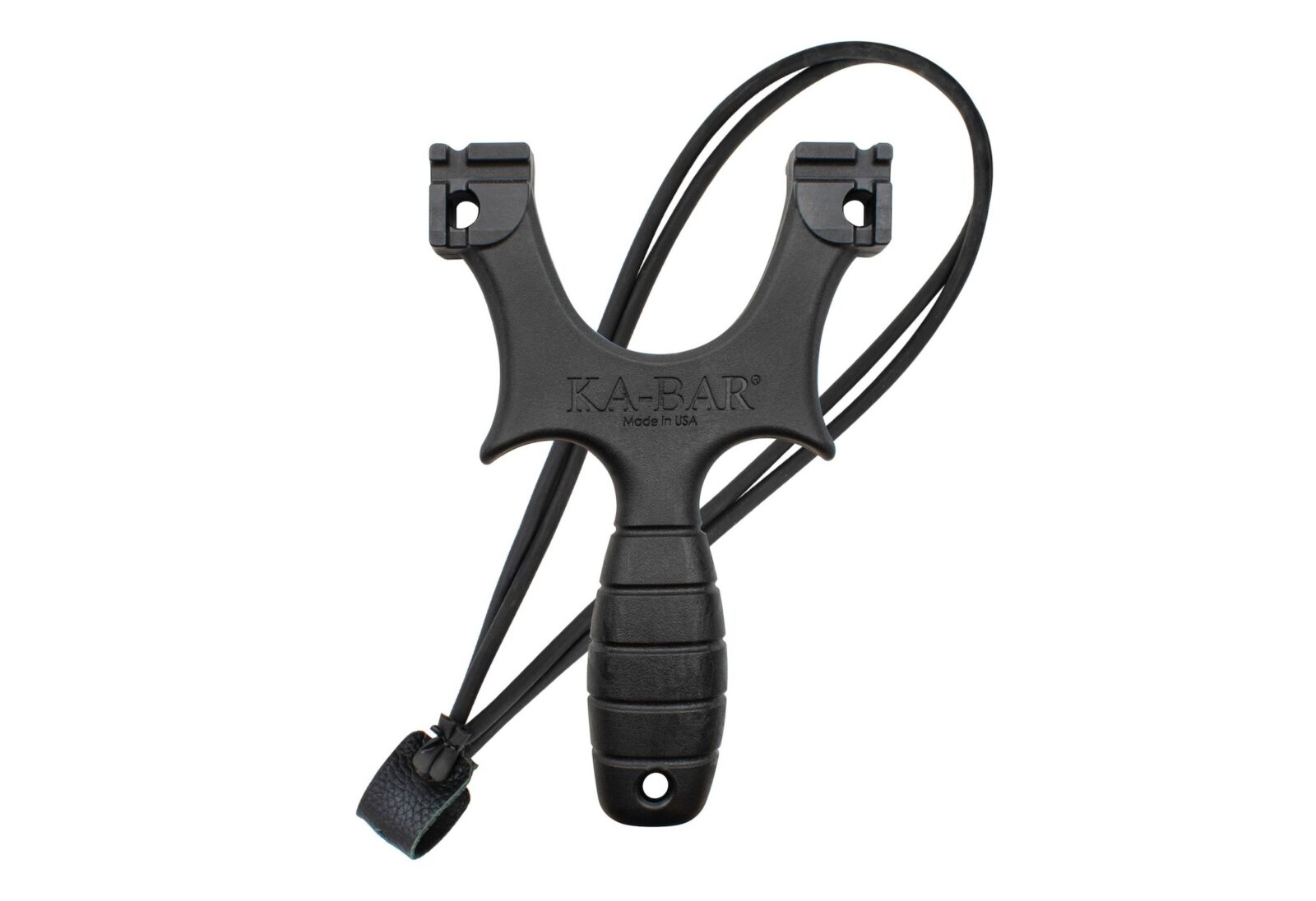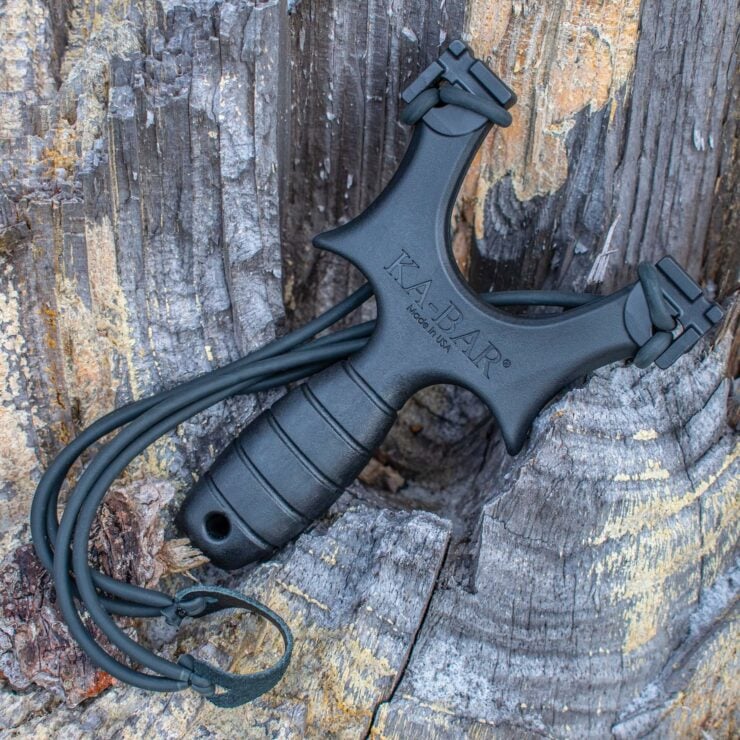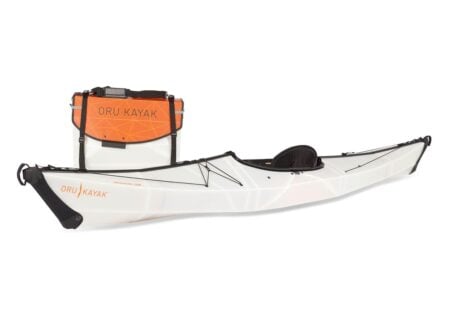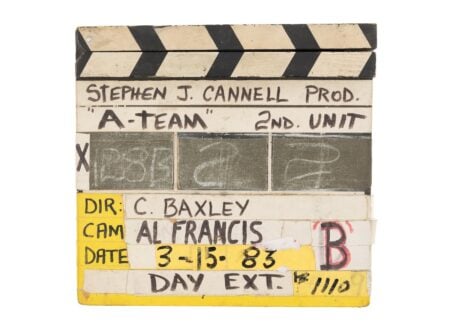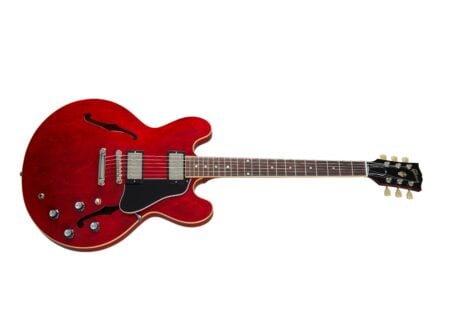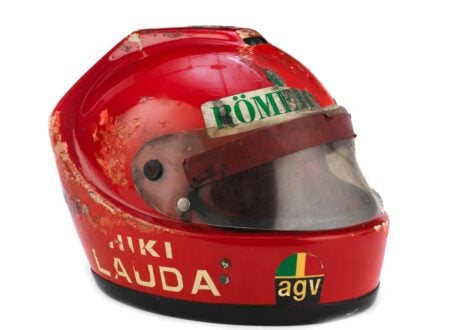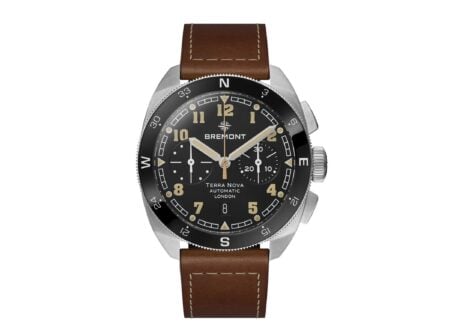This is the Ka-Bar “Sweet Move” Slingshot, it’s made in the United States and it’s designed to fit neatly in a pocket or backpack. Slingshots like this can make for great entertainment plinking at cans or simple knock-down targets, and they can be good to bring along on camping trips for entertainment.
While the exact origin of the slingshot is unclear, it is believed to have emerged in the 19th century, around the time of the advent of vulcanized rubber by Charles Goodyear in 1839. The elasticity of this rubber allowed for the creation of the modern slingshot’s distinctive Y-shaped frame with rubber bands attached to launch projectiles.
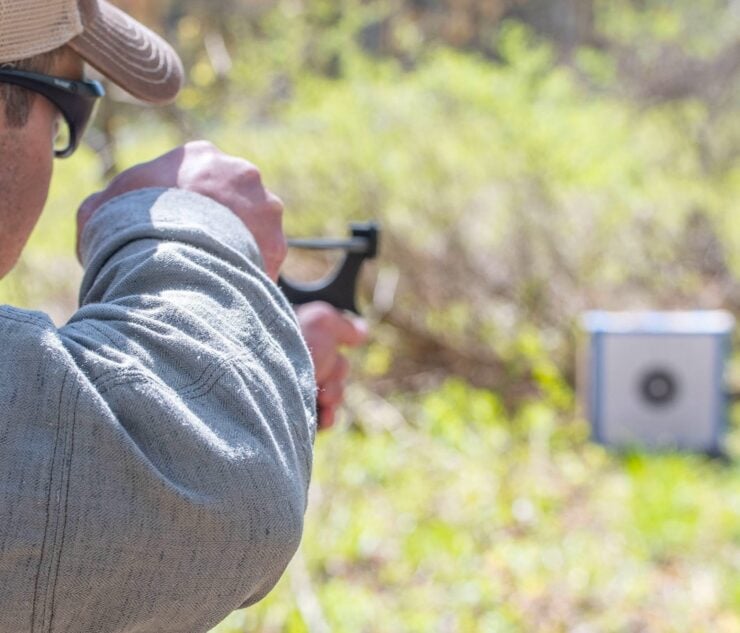

The ancestor of the slingshot was the sling, most famous as the weapon of choice for David who is said to have defeated the giant Goliath in the Biblical Book of Samuel.
Early slingshots were made from forked branches, with rubber strips (often from bicycle inner tubes) and a leather launching pouch. Today, they’re made from a variety of materials, including steel, aluminum, and modern high-strength polycarbonate plastics.
Where Did The Name Ka-Bar Come From?
The name “Ka-Bar” is believed to have originated from a testimonial letter written by a fur trapper in the early 20th century, who claimed to have killed an attacking bear with one of the company’s knives when his gun jammed.
Though the exact details of the story are sketchy and the letter was partially illegible and as such all they could make out was “k a b ar” (killed a bear), the Union Cutlery Company, which produced the knife, began using the name KA-BAR as their trademark.
By the time of World War II, there was a demand for a tough, reliable combat knife for U.S. troops. The initial knives issued to Marines early in the war were not up to the demands of combat, leading to a need for a better design.
In 1942, Union Cutlery submitted designs for the USMC Mark 2 Combat Knife, which would later be dubbed the “KA-BAR” by the troops. The design was adopted by the Marines and subsequently by the U.S. Navy (as the U.S. Navy Utility Knife, Mark 2).
This knife became an iconic tool for the U.S. military throughout World War II. Its full tang design, leather handle, and 7-inch blade made it versatile, useful for everything from hand-to-hand combat to utility tasks. This knife remains in production today, and more than any other design it’s the product that really made Ka-Bar a household name.
The Sweet Move Slingshot is one of the newer product releases from Ka-Bar, and it has an American-made UltraMid® polymer frame that’s both stronger than the more traditional wood, as well as much more waterproof. The grip is modeled after the Ka-Bar U.S. Marine knife handle from WWII, and it’s designed to rest naturally against your thumb and index fingers.
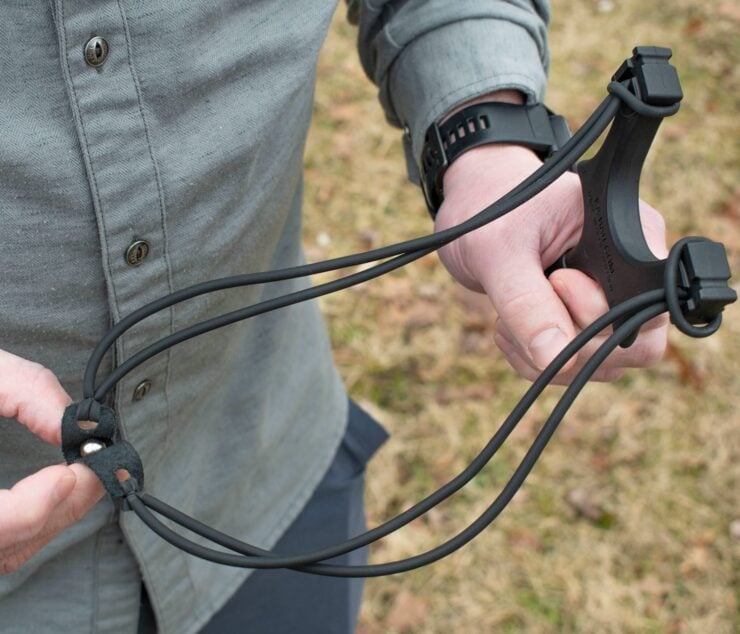

This slingshot has a synthetic leather launching pouch and it uses black latex bands, with replacement bands included with each purchase. Ammunition is not included, but most simply use small stainless steel ball bearings which can be bought in bulk from hardware stores. Huckberry is now selling the Sweet Move Slingshot for $19 USD, and they offer free US returns and a best price guarantee.


Articles that Ben has written have been covered on CNN, Popular Mechanics, Smithsonian Magazine, Road & Track Magazine, the official Pinterest blog, the official eBay Motors blog, BuzzFeed, Autoweek Magazine, Wired Magazine, Autoblog, Gear Patrol, Jalopnik, The Verge, and many more.
Silodrome was founded by Ben back in 2010, in the years since the site has grown to become a world leader in the alternative and vintage motoring sector, with well over a million monthly readers from around the world and many hundreds of thousands of followers on social media.

